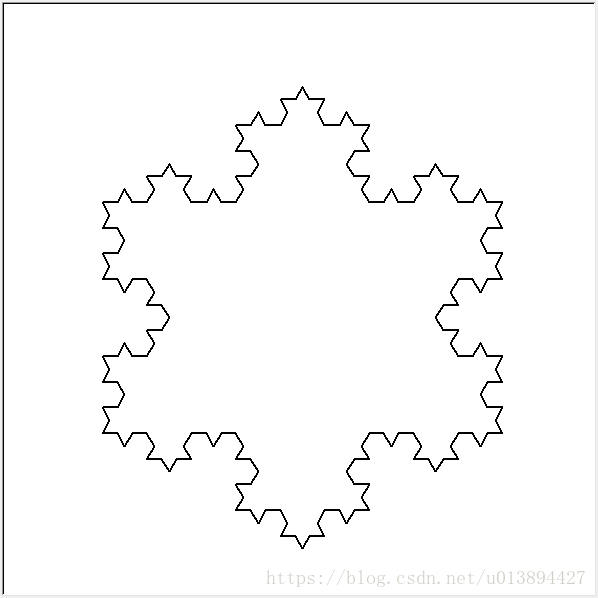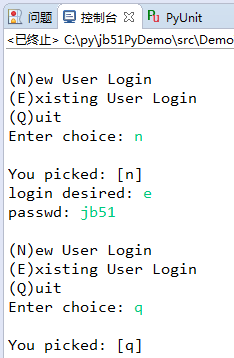35个Python编程小技巧
这篇博客其实就是这个集合整理后一部分的公开亮相。如果你已经是个python大牛,那么基本上你应该知道这里面的大多数用法了,但我想你应该也能发现一些你不知道的新技巧。而如果你之前是一个c,c++,java的程序员,同时在学习python,或者干脆就是一个刚刚学习编程的新手,那么你应该会看到很多特别有用能让你感到惊奇的实用技巧,就像我当初一样。
每一个技巧和语言用法都会在一个个实例中展示给大家,也不需要有其他的说明。我已经尽力把每个例子弄的通俗易懂,但是因为读者对python的熟悉程度不同,仍然可能难免有一些晦涩的地方。所以如果这些例子本身无法让你读懂,至少这个例子的标题在你后面去google搜索的时候会帮到你。
整个集合大概是按照难易程度排序,简单常见的在前面,比较少见的在最后。
1.1 拆箱
>>> a, b, c = 1, 2, 3
>>> a, b, c
(1, 2, 3)
>>> a, b, c = [1, 2, 3]
>>> a, b, c
(1, 2, 3)
>>> a, b, c = (2 * i + 1 for i in range(3))
>>> a, b, c
(1, 3, 5)
>>> a, (b, c), d = [1, (2, 3), 4]
>>> a
1
>>> b
2
>>> c
3
>>> d
4
1.2 拆箱变量交换
>>> a, b = b, a
>>> a, b
(2, 1)
1.3 扩展拆箱(只兼容python3)
>>> a
1
>>> b
[2, 3, 4]
>>> c
5
1.4 负数索引
>>> a[-1]
10
>>> a[-3]
8
1.5 切割列表
>>> a[2:8]
[2, 3, 4, 5, 6, 7]
1.6 负数索引切割列表
>>> a[-4:-2]
[7, 8]
1.7指定步长切割列表
>>> a[::2]
[0, 2, 4, 6, 8, 10]
>>> a[::3]
[0, 3, 6, 9]
>>> a[2:8:2]
[2, 4, 6]
1.8 负数步长切割列表
>>> a[::-1]
[10, 9, 8, 7, 6, 5, 4, 3, 2, 1, 0]
>>> a[::-2]
[10, 8, 6, 4, 2, 0]
1.9 列表切割赋值
>>> a[2:3] = [0, 0]
>>> a
[1, 2, 0, 0, 4, 5]
>>> a[1:1] = [8, 9]
>>> a
[1, 8, 9, 2, 0, 0, 4, 5]
>>> a[1:-1] = []
>>> a
[1, 5]
1.10 命名列表切割方式
>>> LASTTHREE = slice(-3, None)
>>> LASTTHREE
slice(-3, None, None)
>>> a[LASTTHREE]
[3, 4, 5]
1.11 列表以及迭代器的压缩和解压缩
>>> b = ['a', 'b', 'c']
>>> z = zip(a, b)
>>> z
[(1, 'a'), (2, 'b'), (3, 'c')]
>>> zip(*z)
[(1, 2, 3), ('a', 'b', 'c')]
1.12 列表相邻元素压缩器
>>> zip(*([iter(a)] * 2))
[(1, 2), (3, 4), (5, 6)]
>>> group_adjacent = lambda a, k: zip(*([iter(a)] * k))
>>> group_adjacent(a, 3)
[(1, 2, 3), (4, 5, 6)]
>>> group_adjacent(a, 2)
[(1, 2), (3, 4), (5, 6)]
>>> group_adjacent(a, 1)
[(1,), (2,), (3,), (4,), (5,), (6,)]
>>> zip(a[::2], a[1::2])
[(1, 2), (3, 4), (5, 6)]
>>> zip(a[::3], a[1::3], a[2::3])
[(1, 2, 3), (4, 5, 6)]
>>> group_adjacent = lambda a, k: zip(*(a[i::k] for i in range(k)))
>>> group_adjacent(a, 3)
[(1, 2, 3), (4, 5, 6)]
>>> group_adjacent(a, 2)
[(1, 2), (3, 4), (5, 6)]
>>> group_adjacent(a, 1)
[(1,), (2,), (3,), (4,), (5,), (6,)]
1.13 在列表中用压缩器和迭代器滑动取值窗口
... z = [iter(a[i:]) for i in range(n)]
... return zip(*z)
...
>>> a = [1, 2, 3, 4, 5, 6]
>>> n_grams(a, 3)
[(1, 2, 3), (2, 3, 4), (3, 4, 5), (4, 5, 6)]
>>> n_grams(a, 2)
[(1, 2), (2, 3), (3, 4), (4, 5), (5, 6)]
>>> n_grams(a, 4)
[(1, 2, 3, 4), (2, 3, 4, 5), (3, 4, 5, 6)]
1.14 用压缩器反转字典
>>> m.items()
[('a', 1), ('c', 3), ('b', 2), ('d', 4)]
>>> zip(m.values(), m.keys())
[(1, 'a'), (3, 'c'), (2, 'b'), (4, 'd')]
>>> mi = dict(zip(m.values(), m.keys()))
>>> mi
{1: 'a', 2: 'b', 3: 'c', 4: 'd'}
1.15 列表展开
>>> list(itertools.chain.from_iterable(a))
[1, 2, 3, 4, 5, 6]
>>> sum(a, [])
[1, 2, 3, 4, 5, 6]
>>> [x for l in a for x in l]
[1, 2, 3, 4, 5, 6]
>>> a = [[[1, 2], [3, 4]], [[5, 6], [7, 8]]]
>>> [x for l1 in a for l2 in l1 for x in l2]
[1, 2, 3, 4, 5, 6, 7, 8]
>>> a = [1, 2, [3, 4], [[5, 6], [7, 8]]]
>>> flatten = lambda x: [y for l in x for y in flatten(l)] if type(x) is list else [x]
>>> flatten(a)
[1, 2, 3, 4, 5, 6, 7, 8]
1.16 生成器表达式
>>> next(g)
0
>>> next(g)
1
>>> next(g)
4
>>> next(g)
9
>>> sum(x ** 3 for x in xrange(10))
2025
>>> sum(x ** 3 for x in xrange(10) if x % 3 == 1)
408
1.17 字典推导
>>> m
{0: 0, 1: 1, 2: 4, 3: 9, 4: 16}
>>> m = {x: 'A' + str(x) for x in range(10)}
>>> m
{0: 'A0', 1: 'A1', 2: 'A2', 3: 'A3', 4: 'A4', 5: 'A5', 6: 'A6', 7: 'A7', 8: 'A8', 9: 'A9'}
1.18 用字典推导反转字典
>>> m
{'d': 4, 'a': 1, 'b': 2, 'c': 3}
>>> {v: k for k, v in m.items()}
{1: 'a', 2: 'b', 3: 'c', 4: 'd'}
1.19 命名元组
>>> p = Point(x=1.0, y=2.0)
>>> p
Point(x=1.0, y=2.0)
>>> p.x
1.0
>>> p.y
2.0
1.20 继承命名元组
... __slots__ = ()
... def __add__(self, other):
... return Point(x=self.x + other.x, y=self.y + other.y)
...
>>> p = Point(x=1.0, y=2.0)
>>> q = Point(x=2.0, y=3.0)
>>> p + q
Point(x=3.0, y=5.0)
1.21 操作集合
>>> A
set([1, 2, 3])
>>> B = {3, 4, 5, 6, 7}
>>> B
set([3, 4, 5, 6, 7])
>>> A | B
set([1, 2, 3, 4, 5, 6, 7])
>>> A & B
set([3])
>>> A - B
set([1, 2])
>>> B - A
set([4, 5, 6, 7])
>>> A ^ B
set([1, 2, 4, 5, 6, 7])
>>> (A ^ B) == ((A - B) | (B - A))
True
1.22 操作多重集合
>>> B = collections.Counter([2, 2, 3])
>>> A
Counter({2: 2, 1: 1})
>>> B
Counter({2: 2, 3: 1})
>>> A | B
Counter({2: 2, 1: 1, 3: 1})
>>> A & B
Counter({2: 2})
>>> A + B
Counter({2: 4, 1: 1, 3: 1})
>>> A - B
Counter({1: 1})
>>> B - A
Counter({3: 1})
1.23 统计在可迭代器中最常出现的元素
>>> A
Counter({3: 4, 1: 2, 2: 2, 4: 1, 5: 1, 6: 1, 7: 1})
>>> A.most_common(1)
[(3, 4)]
>>> A.most_common(3)
[(3, 4), (1, 2), (2, 2)]
1.24 两端都可操作的队列
>>> Q.append(1)
>>> Q.appendleft(2)
>>> Q.extend([3, 4])
>>> Q.extendleft([5, 6])
>>> Q
deque([6, 5, 2, 1, 3, 4])
>>> Q.pop()
4
>>> Q.popleft()
6
>>> Q
deque([5, 2, 1, 3])
>>> Q.rotate(3)
>>> Q
deque([2, 1, 3, 5])
>>> Q.rotate(-3)
>>> Q
deque([5, 2, 1, 3])
1.25 有最大长度的双端队列
>>> for i in xrange(10):
... last_three.append(i)
... print ', '.join(str(x) for x in last_three)
...
0
0, 1
0, 1, 2
1, 2, 3
2, 3, 4
3, 4, 5
4, 5, 6
5, 6, 7
6, 7, 8
7, 8, 9
1.26 可排序词典
>>> print ', '.join(m.keys())
1, 0, 3, 2, 5, 4, 7, 6, 9, 8
>>> m = collections.OrderedDict((str(x), x) for x in range(10))
>>> print ', '.join(m.keys())
0, 1, 2, 3, 4, 5, 6, 7, 8, 9
>>> m = collections.OrderedDict((str(x), x) for x in range(10, 0, -1))
>>> print ', '.join(m.keys())
10, 9, 8, 7, 6, 5, 4, 3, 2, 1
1.27 默认词典
>>> m['a']
Traceback (most recent call last):
File "<stdin>", line 1, in <module>
KeyError: 'a'
>>>
>>> m = collections.defaultdict(int)
>>> m['a']
0
>>> m['b']
0
>>> m = collections.defaultdict(str)
>>> m['a']
''
>>> m['b'] += 'a'
>>> m['b']
'a'
>>> m = collections.defaultdict(lambda: '[default value]')
>>> m['a']
'[default value]'
>>> m['b']
'[default value]'
1.28 默认字典的简单树状表达
>>> tree = lambda: collections.defaultdict(tree)
>>> root = tree()
>>> root['menu']['id'] = 'file'
>>> root['menu']['value'] = 'File'
>>> root['menu']['menuitems']['new']['value'] = 'New'
>>> root['menu']['menuitems']['new']['onclick'] = 'new();'
>>> root['menu']['menuitems']['open']['value'] = 'Open'
>>> root['menu']['menuitems']['open']['onclick'] = 'open();'
>>> root['menu']['menuitems']['close']['value'] = 'Close'
>>> root['menu']['menuitems']['close']['onclick'] = 'close();'
>>> print json.dumps(root, sort_keys=True, indent=4, separators=(',', ': '))
{
"menu": {
"id": "file",
"menuitems": {
"close": {
"onclick": "close();",
"value": "Close"
},
"new": {
"onclick": "new();",
"value": "New"
},
"open": {
"onclick": "open();",
"value": "Open"
}
},
"value": "File"
}
}
1.29 对象到唯一计数的映射
>>> value_to_numeric_map = collections.defaultdict(itertools.count().next)
>>> value_to_numeric_map['a']
0
>>> value_to_numeric_map['b']
1
>>> value_to_numeric_map['c']
2
>>> value_to_numeric_map['a']
0
>>> value_to_numeric_map['b']
1
1.30 最大和最小的几个列表元素
>>> heapq.nsmallest(5, a)
[3, 3, 5, 6, 8]
>>> heapq.nlargest(5, a)
[100, 100, 99, 98, 98]
1.31 两个列表的笛卡尔积
(1, 4)
(1, 5)
(2, 4)
(2, 5)
(3, 4)
(3, 5)
>>> for p in itertools.product([0, 1], repeat=4):
... print ''.join(str(x) for x in p)
...
0000
0001
0010
0011
0100
0101
0110
0111
1000
1001
1010
1011
1100
1101
1110
1111
1.32 列表组合和列表元素替代组合
... print ''.join(str(x) for x in c)
...
123
124
125
134
135
145
234
235
245
345
>>> for c in itertools.combinations_with_replacement([1, 2, 3], 2):
... print ''.join(str(x) for x in c)
...
11
12
13
22
23
33
1.33 列表元素排列组合
... print ''.join(str(x) for x in p)
...
1234
1243
1324
1342
1423
1432
2134
2143
2314
2341
2413
2431
3124
3142
3214
3241
3412
3421
4123
4132
4213
4231
4312
4321
1.34 可链接迭代器
>>> for p in itertools.chain(itertools.combinations(a, 2), itertools.combinations(a, 3)):
... print p
...
(1, 2)
(1, 3)
(1, 4)
(2, 3)
(2, 4)
(3, 4)
(1, 2, 3)
(1, 2, 4)
(1, 3, 4)
(2, 3, 4)
>>> for subset in itertools.chain.from_iterable(itertools.combinations(a, n) for n in range(len(a) + 1))
... print subset
...
()
(1,)
(2,)
(3,)
(4,)
(1, 2)
(1, 3)
(1, 4)
(2, 3)
(2, 4)
(3, 4)
(1, 2, 3)
(1, 2, 4)
(1, 3, 4)
(2, 3, 4)
(1, 2, 3, 4)
1.35 根据文件指定列类聚
>>> with open('contactlenses.csv', 'r') as infile:
... data = [line.strip().split(',') for line in infile]
...
>>> data = data[1:]
>>> def print_data(rows):
... print '\n'.join('\t'.join('{: <16}'.format(s) for s in row) for row in rows)
...
>>> print_data(data)
young myope no reduced none
young myope no normal soft
young myope yes reduced none
young myope yes normal hard
young hypermetrope no reduced none
young hypermetrope no normal soft
young hypermetrope yes reduced none
young hypermetrope yes normal hard
pre-presbyopic myope no reduced none
pre-presbyopic myope no normal soft
pre-presbyopic myope yes reduced none
pre-presbyopic myope yes normal hard
pre-presbyopic hypermetrope no reduced none
pre-presbyopic hypermetrope no normal soft
pre-presbyopic hypermetrope yes reduced none
pre-presbyopic hypermetrope yes normal none
presbyopic myope no reduced none
presbyopic myope no normal none
presbyopic myope yes reduced none
presbyopic myope yes normal hard
presbyopic hypermetrope no reduced none
presbyopic hypermetrope no normal soft
presbyopic hypermetrope yes reduced none
presbyopic hypermetrope yes normal none
>>> data.sort(key=lambda r: r[-1])
>>> for value, group in itertools.groupby(data, lambda r: r[-1]):
... print '-----------'
... print 'Group: ' + value
... print_data(group)
...
-----------
Group: hard
young myope yes normal hard
young hypermetrope yes normal hard
pre-presbyopic myope yes normal hard
presbyopic myope yes normal hard
-----------
Group: none
young myope no reduced none
young myope yes reduced none
young hypermetrope no reduced none
young hypermetrope yes reduced none
pre-presbyopic myope no reduced none
pre-presbyopic myope yes reduced none
pre-presbyopic hypermetrope no reduced none
pre-presbyopic hypermetrope yes reduced none
pre-presbyopic hypermetrope yes normal none
presbyopic myope no reduced none
presbyopic myope no normal none
presbyopic myope yes reduced none
presbyopic hypermetrope no reduced none
presbyopic hypermetrope yes reduced none
presbyopic hypermetrope yes normal none
-----------
Group: soft
young myope no normal soft
young hypermetrope no normal soft
pre-presbyopic myope no normal soft
pre-presbyopic hypermetrope no normal soft
presbyopic hypermetrope no normal soft

